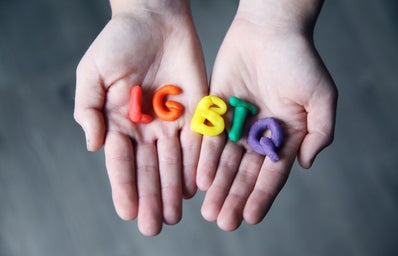As a young bisexual in the modern world, I often find myself thinking about where my community’s pride and rallying spirits came from. I was fifteen when I watched the supreme court legalize same gender marriage, and I knew right then that I would be able to marry who I wanted without having to hide from the public. However, we live in a world where only 29 countries have legalized same gender marriage and many of us wait anxiously for more to join, using our voices and actions to fight for equality.
When I think of pride and standing together with LGBTQ+ people, one of the most prominent examples that comes to mind in LGBTQ+ history is the Stonewall Riots, which took place from June 28th, 1969 to July 3rd, 1969. The icons who rose from the shattered glass of the Stonewall Inn remain relevant still in today’s society. Without Stonewall, I do not think pride month would be what it is today. Let us travel back in time and learn about, arguably, the most important riots in LGBTQ+ history.

On the morning of June 28th, everything changed. The police obtained a warrant to search the bar and arrested 13 patrons who violated the state’s gender appropriate clothing statute, which prohibited “cross-dressing.” As the police attempted to leave the Inn with the arrested patrons, the neighborhood banded together outside and blocked the exit, protesting for the release of these individuals. A young lesbian was hit over the head by an officer as she was shoved into a police van, screaming at the crowd to start throwing objects. Her words, paired with the LGBTQ+ and allied youth’s frustration with constant discrimination, were the straw that broke the camel’s back. The riot unfolded right then. The protests made their way to the rest of the neighborhood. There was no sign of stopping until the police’s riot squad arrived at 4:00 am.
The participants of the protests were labeled “Stonewallers,” and they wore this label with pride. There is even a Stonewall Veteran’s Association, and many of the protesters will share their stories of those June and July nights fighting for equality and equity in the streets of New York. One of the most famous Stonewallers was a transgender woman by the name of Marsha P. Johnson. She was an LGBTQ+ activist and advocate for trans people of color. She spearheaded the first night of the riots, unknowing that there would be many more nights of protesting and rioting. Later in her life, she helped start Street Transgender Action Revolutionaries (STAR) with gay liberation activist, Sylvia Rivera. Sylvia Rivera was also a veteran of the Stonewall riots. She was a trans activist who participated in protests and demonstrations with the Gay Liberation Front (GLF). Other important veterans include Raymond Castro, a gay Puerto Rican man who was in the Stonewall Inn when police came; Jerry Hoose was also in the Stonewall Inn when police raided, and later helped create the name for the Gay Liberation Front. Hoose met President Barack Obama and First lady Michelle Obama at the 40th anniversary of the Stonewall riots in 2009.

On the first anniversary of the Stonewall riots, the first ever pride parade took place, and since then, pride parades have happened all over the world. Although the original Stonewall Inn closed its doors after the riots, a renovated Stonewall Inn opened in 2007, and was recognized as a historical landmark by the Obama administration. This is a huge win for LGBTQ+ people living in the United States, because the Stonewall Inn is the very first LGBTQ+ historical landmark in the nation!
Since the riots, the history of the event has taken shape in many different mediums, such as film, television, books, and art pieces. The Stonewall riots alerted the rest of the United States to help advocate for a largely ostracized minority, and was revolutionary in helping push for LGBTQ+ rights. The Stonewall Inn is where pride began, and it changed the lives for millions of LGBTQ+ people all over the United States and the world.
Resources:
History.com Editors. “Stonewall Riots.” History.com, A&E Television Networks, 31 May 2017, www.history.com/topics/gay-rights/the-stonewall-riots.
Television Networks, A&E. “The Stonewall Riots Begin in NYC’s Greenwich Village.” History.com, A&E Television Networks, 18 Oct. 2010, www.history.com/this-day-in-history/the-stonewall-riot.
Ryan, Hugh. “How Dressing in Drag Was Labeled a Crime in the 20th Century.” History.com, A&E Television Networks, 25 June 2019, www.history.com/news/stonewall-riots-lgbtq-drag-three-article-rule.
Grinberg, Emanuella. “How the Stonewall Riots Inspired Today’s Pride Celebrations.” CNN, Cable News Network, 28 June 2019, www.cnn.com/2019/06/28/us/1969-stonewall-riots-history/index.html.
Worthen, Meredith. “The Stonewall Inn: The People, Place and Lasting Significance of ‘Where Pride Began’.” Biography.com, A&E Networks Television, 26 June 2020, www.biography.com/news/stonewall-riots-history-leaders.
Worthen, Meredith. “Marsha P. Johnson.” Biography.com, A&E Networks Television, 25 June 2020, www.biography.com/activist/marsha-p-johnson.
Brodcasting Service, Public. “Who Was at Stonewall?” PBS, Public Broadcasting Service, www.pbs.org/wgbh/americanexperience/features/stonewall-participants/.
“Disasters.” NYCdata: Stonewall Inn Riot – 1969, www.baruch.cuny.edu/nycdata/disasters/riots-stonewall.html.


